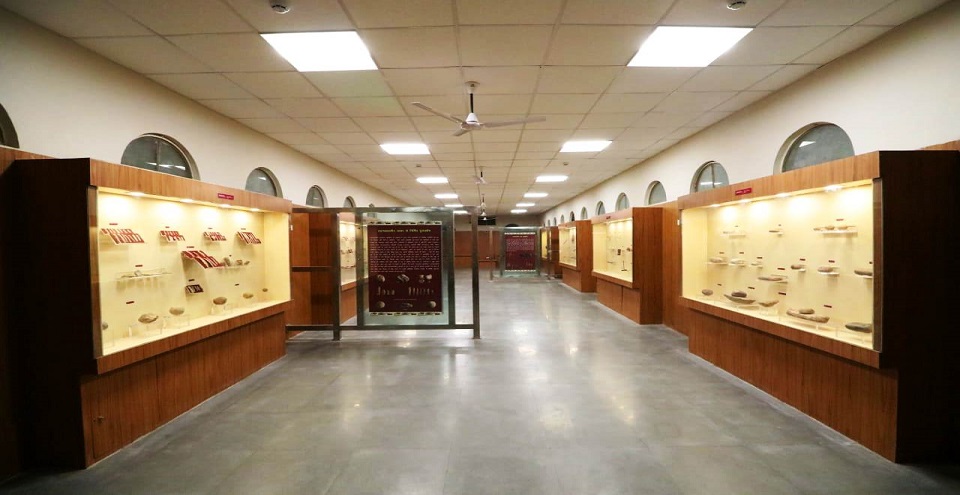
Kalibangan: Insights into an Ancient Indus Valley Civilization City
Kalibangan, located in the Hanumangarh district of Rajasthan, India, is a key archaeological site that offers valuable insights into the Indus Valley Civilization, one of the world’s earliest urban cultures. The site, dating back to around 2800 BCE, plays a significant role in understanding the development of urban planning, agriculture, and societal organization in ancient India.
Overview of Kalibangan
Kalibangan, which translates to “black bangles” in Hindi, is notable for its contributions to our knowledge of the Indus Valley Civilization. The site is divided into two main areas: the lower town, which served as the residential area, and the upper town, which was likely a center for administrative and religious activities.
Key Discoveries and Features
1. Urban Planning and Architecture
City Layout: Kalibangan’s layout reflects the advanced urban planning characteristic of Indus Valley cities. The site features well-organized streets and a grid-like pattern, indicating sophisticated urban management.
Drainage System: One of the most impressive features of Kalibangan is its drainage system. The site reveals an extensive network of brick-lined drains that suggest a focus on sanitation and public health, similar to other Indus Valley cities like Harappa and Mohenjo-Daro.
2. Agricultural Evidence
Plowed Fields: Excavations at Kalibangan have uncovered evidence of early agriculture, including plowed fields. This discovery highlights the advanced agricultural techniques employed by the Indus Valley people and their reliance on farming for sustenance.
Agricultural Tools: Tools such as sickles and grinding stones have been found, providing insight into the agricultural practices of the time.
3. Fire Altars and Rituals
- Fire Altars: Kalibangan is unique for its discovery of fire altars, which are believed to be associated with ritualistic practices. These altars suggest that fire worship and ritual activities were significant aspects of life in Kalibangan, predating similar practices in other Indus Valley cities.
4. Artifacts
- Pottery and Seals: The site has yielded various artifacts, including pottery, seals, and jewelry. These artifacts offer clues about daily life, trade, and cultural practices of the Indus Valley people.
Historical and Cultural Significance
1. Connection to the Indus Valley Civilization
Kalibangan is an important site for understanding the spread and influence of the Indus Valley Civilization in northwestern India. Its urban features, agricultural practices, and artifacts illustrate the sophistication of this ancient culture and its impact on the region.
2. Role in the Region
Kalibangan likely served as a major urban center and trading hub during its time. Its strategic location and advanced infrastructure suggest that it played a significant role in regional trade and cultural exchanges.
3. Contributions to Archaeology
The discoveries at Kalibangan have significantly contributed to our knowledge of the Indus Valley Civilization. The site’s unique features, such as the fire altars, provide valuable insights into the religious and cultural practices of the time.
Preservation and Ongoing Research
1. Conservation Efforts
Kalibangan is protected as an archaeological site, with ongoing efforts to preserve and study its remains. Conservation work ensures that the site remains accessible for future research and educational purposes.
2. Research and Excavation
Archaeologists continue to study Kalibangan to uncover more about its history and significance. Ongoing excavations aim to reveal further details about the city’s layout, daily life, and cultural practices.
Educational and Tourism Value
1. Educational Insights
Kalibangan serves as a valuable educational resource for scholars, students, and historians interested in ancient civilizations. Its discoveries offer insights into the early urbanization of the Indian subcontinent.
2. Tourist Attraction
The site attracts tourists and history enthusiasts who come to explore its ancient ruins and learn about the rich heritage of the Indus Valley Civilization. Kalibangan’s significance adds to the cultural and historical appeal of Rajasthan.
Kalibangan is a remarkable archaeological site that offers a window into the advanced urban life of the Indus Valley Civilization. Its well-preserved remains, including its unique fire altars and advanced drainage system, contribute significantly to our understanding of ancient Indian history. As ongoing research continues to uncover new discoveries, Kalibangan remains a key location for exploring the complexities and achievements of one of history’s great civilizations.
